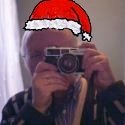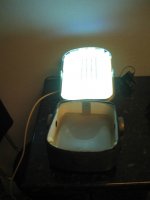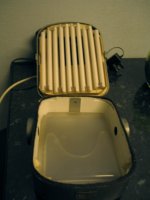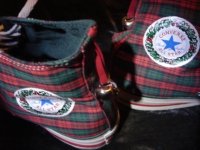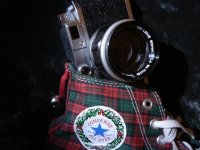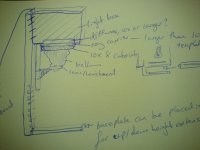An afterthought, not about the bellows, but about the light source, which I suspect could be a big headache. Plan A, a diffuser: light bulb, plexiglas or frosted or (pricey) "opal" white glass. Smooth, not too contrasty, makes scratches disappear... Plan B, a condenser: light source plus monster lenses (or fresnels?). Hard to put together, but extra-contrasty and sharp. Consideration with Plan A or Plan B: heat generated by light bulb, not only radiating from around bulb but transmitted as infrared through condenser lenses or diffuser to film, perhaps necessitating an IR cutoff filter (big bluish piece of glass) above film. Plan C: an array of white light-emitting diodes (LEDs) and a diffuser, making an enlarger head with the character of a traditional diffuser but without the heat, and with effectively unlimited bulb life. The Nikon film scanners use LEDs, so it seems any problems with the light color are not insoluble, though color correction might be built into their firmware.
In the lab where I work we used this method to develop a featureless, instantly switchable visual "target" to which infants' gaze was directed in psychological tests. White LEDs are available for a dollar or two (a pound sterling or less in the UK, I imagine). The wiring is very simple: feed them DC, observe polarity, put a resistor in the circuit to limit current draw (variable resistor will control brightness), make a series-parallel array (several series in parallel) with proper number of LEDs to conform to whatever DC power supply you have sitting around.
I'd be surprised if this hasn't been tried already, it seems so obvious, but my knowledge of enlarger heads is as out of date as most of my other knowledge.
-- Michael


